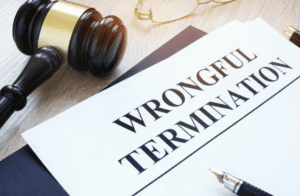
Even if an employer is irresponsible enough to break the law and discriminate against someone, it is probably not reckless enough to admit it. Normally, in discrimination cases, the employer comes up with a reason (whether true or not) to explain why something bad happened to the employee. The burden of proving discrimination is on the plaintiff. Part of that burden is showing that the reason the employer gives for its actions is a “pretext,” which is another word for lying.
This issue played out in a recent case involving a former Lockheed Martin engineer, Richard Finney. Over time, Finney made several age discrimination claims against his ex-employer. When Finney took Lockheed to court, he lost his case because he could not show that Lockheed’s given reasons for laying him off were a pretext for discrimination. Finney appealed the decision to the U.S. Court of Appeals for the Tenth Circuit, and it upheld the dismissal.
Table of Contents
ToggleElectrical Engineer Laid Off After More Than 30 Years at the Company
Finney had his ups and downs at Lockheed, according to the appellate decision.
Finney worked for Lockheed as an electrical engineer for more than 30 years. Through 2008, his performance evaluations were positive. That year, the project Finney was working on ended, and he started working on another project. His supervisor claimed that Finney was not meeting milestones, that he did not update his supervisors on the status of his work, and that his interpersonal skills needed improvement.
In 2009, Finney received his first poor job evaluation. In Lockheed’s scale of 1 to 5 (with 5 being the worst), he earned a 4. He filed an internal discrimination complaint and one with the federal Equal Employment Opportunity Commission (EEOC). The next year, he was ranked a 2.
When that project ended, Finney was invited to work on a new project for a trial period and then invited to apply for an open position. The internal job classification was lower, but the pay remained the same. Finney filed another discrimination complaint anyway.
In 2011, Finney’s supervisor rated him a 4 because he thought Finney struggled to complete tasks, some of which were not done on time. His supervisor intended to work with Finney to improve his performance and upgrade his position, but Finney decided to find another position in the company.
In 2012, Lockheed decided to lay off some employees. Finney’s project had to let go of 30 people. Managers decided to lay off one engineer at Finney’s level, and he was it. Of the 34 engineers considered for possible layoff, 12 were as old or older than Finney, and six were over the age of 55.
Engineers were evaluated and ranked based on performance, and Finney was on the bottom. He was told that if he could not find another job at Lockheed, he would be laid off. Finney failed to find another position.
He then filed another complaint with the EEOC and later filed a lawsuit in federal court in Colorado. Finney claimed Lockheed laid him off because of his age (53) and as retaliation for his prior complaints of discrimination.
Appellate Court Rules That Finney Did Not Carry His Burden of Proof
In its decision on Finney’s lawsuit, the appellate court first reviewed the applicable law. If there is no direct, or explicit, evidence of age discrimination, an employee must establish a case of discrimination by showing four things. Here, Finney had to show the following:
- He was a member of the class protected by the Age Discrimination in Employment Act (ADEA). Finney qualified since he was 53 years old.
- He suffered an adverse employment action. Finney was laid off.
- He was qualified for the position at issue. Lockheed disputed Finney’s assertion that he was qualified.
- Lockheed treated him less favorably than others not in the same protected class. Lockheed also contested this assertion.
 If a plaintiff can show these four things, the employer would then have the burden of coming up with a legitimate, nondiscriminatory reason for its decision. Then, if the employer gives a plausible reason, the burden would shift back to the plaintiff to show that the employer’s reason was a pretext for discrimination, meaning that it was not credible.
If a plaintiff can show these four things, the employer would then have the burden of coming up with a legitimate, nondiscriminatory reason for its decision. Then, if the employer gives a plausible reason, the burden would shift back to the plaintiff to show that the employer’s reason was a pretext for discrimination, meaning that it was not credible.
A plaintiff can demonstrate that a reason is pretextual by showing weaknesses in the employer’s reason, such as that it is implausible, that it is inconsistent with business practices or policies, or that there are contradictions in the employer’s given reasons for its action. The plaintiff must offer evidence that would allow a reasonable factfinder to rationally find that the employer’s reason was not credible and that it did not act based on the alleged nondiscriminatory reason.
In a case involving a layoff, a plaintiff could show pretext in several ways. He could present evidence that the termination did not match the employer’s criteria for deciding who to lay off. He could also show that the employer deliberately falsified or manipulated the criteria to terminate him. Alternatively, he could show that the layoff itself was pretextual.
Finney made several claims as to why Lockheed’s layoff decision was pretext, none of which persuaded the appellate court. He argued that the layoff criteria were flawed and overly subjective. He also claimed that his supervisors manipulated the criteria to give him the worst ranking. Furthermore, he asserted that his 2011 annual performance was inaccurate and undermined his chances of Lockheed retaining him.
The court found that 12 engineers the same age or older survived the layoff process. In addition, Finney had kept his job despite prior Lockheed layoffs during his career. Finally, if his supervisors made mistakes in his evaluation, there was no evidence they did so with discriminatory intent based on his age. The court wrote, “In sum, none of the evidence proffered by Finney evinces age-related animus (or bias). Without a showing of pretext or evidence that he was discriminated against based on his age, Finney cannot prevail on a claim of age discrimination.”
Summing It Up
A plaintiff has the burden of proving his or her case. That burden normally includes evidence that the employer is lying when it denies that discrimination took place. Without having sufficient evidence to convince a judge or jury that an employer is not credible, a case will probably fail.
- Plaintiffs need facts (not opinions, feelings, or arguments) to show that a court should not believe an employer’s reason for a decision. You need to show inconsistent reasons, contradictory statements, or other evidence showing that the employer’s explanation is false.
- It can be especially difficult to show discrimination where a large company uses a documented, systematic approach to choose which employees to lay off. If there is a logical formula to choosing which employees lose their job and evidence that the company followed its own rules, it could be a tough case to win.
Each case is unique, so just because the court dismissed Finney’s case does not mean that your case lacks merit. If you think your employer has discriminated against you, contact our office so we can review the facts of your situation, the evidence you have, the ways the law may apply, and the steps you could take to protect your legal rights.





